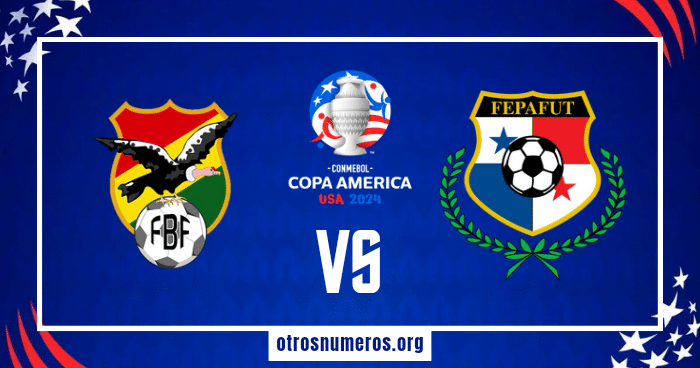Political Landscape

Bolivia vs panama – Bolivia and Panama share a common history of colonialism and struggle for independence, but their political systems have evolved differently. Bolivia is a presidential republic with a multi-party system, while Panama is a constitutional democracy with a presidential system.
The tension between Bolivia and Panama over the disputed territory of Isla Grande is reaching a boiling point. However, as the world watches with bated breath, another thrilling battle is unfolding on the court: the Aces vs. Sky last game.
Tune in to witness the electrifying clash between these two powerhouse teams, where every point could determine the outcome. And as the Aces and Sky give it their all, we eagerly await the resolution of the Bolivia-Panama conflict.
Historical Development of Democracy
Bolivia’s history of democracy has been marked by periods of military rule and instability. The country’s first democratic constitution was adopted in 1826, but it was not until 1982 that a stable democratic government was established. Panama, on the other hand, has had a more stable democratic history. The country’s first constitution was adopted in 1903, and it has maintained a democratic system of government since then.
Bolivia and Panama faced off in a thrilling soccer match, showcasing the talents of their players. While the focus was on the field, basketball fans couldn’t help but notice the impressive stats of Natasha Cloud, the WNBA star. Her stats are a testament to her skill and dedication, making her one of the most exciting players to watch.
As the match between Bolivia and Panama reached its climax, the crowd erupted in cheers, celebrating the thrilling conclusion.
Current Political Parties and Ideologies
Bolivia’s political landscape is dominated by two main parties: the Movement for Socialism (MAS) and the Democratic Unity (UD). The MAS is a left-wing party that supports social and economic reforms, while the UD is a center-right party that supports free market policies. Panama’s political landscape is more fragmented, with a number of parties represented in the National Assembly. The main parties include the Democratic Revolutionary Party (PRD), the Panameñista Party, and the Cambio Democrático Party.
Economic Comparison: Bolivia Vs Panama
Bolivia and Panama present distinct economic profiles, reflecting their varying geographic locations, resource endowments, and development strategies. While Bolivia boasts abundant natural resources, Panama has capitalized on its strategic position as a global logistics hub. This section delves into a comparative analysis of their economic landscapes, examining GDP, inflation rates, unemployment levels, and the major industries that drive their respective economies.
Gross Domestic Product (GDP)
In terms of GDP, Panama outperforms Bolivia by a significant margin. According to the World Bank, Panama’s GDP in 2023 is estimated at $63.38 billion, while Bolivia’s stands at $42.99 billion. This disparity reflects Panama’s higher levels of economic development and its role as a regional financial and commercial center.
Inflation Rates
Regarding inflation, Bolivia has historically experienced higher rates compared to Panama. In 2022, Bolivia’s inflation rate reached 3.12%, while Panama maintained a lower rate of 1.6%. This difference can be attributed to Bolivia’s reliance on imported goods and its relatively less developed financial system.
Unemployment Levels
Panama also boasts a lower unemployment rate than Bolivia. As of 2023, Panama’s unemployment rate stands at 5.5%, while Bolivia’s is estimated at 7.6%. This disparity suggests that Panama has a more robust labor market and a higher demand for skilled workers.
Major Industries
The economic landscapes of Bolivia and Panama are shaped by distinct major industries. Bolivia’s economy is heavily dependent on natural resources, with mining, particularly of tin, silver, and zinc, accounting for a significant portion of its GDP. Agriculture, particularly the cultivation of soybeans, quinoa, and sugar, also plays a vital role. In contrast, Panama’s economy is centered around services, with the Panama Canal, tourism, and financial services serving as key drivers. Additionally, Panama has a growing manufacturing sector, particularly in the production of pharmaceuticals and electronics.
Cultural Exchange

Bolivia and Panama, despite their geographical distance, share a rich cultural tapestry that is both distinct and intertwined. The influence of indigenous traditions, the vibrant rhythms of music, the expressive forms of art, and the captivating tales of literature have shaped the cultural landscapes of both nations.
Indigenous Traditions, Bolivia vs panama
Indigenous cultures have played a profound role in shaping the identities of both Bolivia and Panama. In Bolivia, the Aymara and Quechua communities have preserved their ancestral traditions, including their languages, textiles, and spiritual beliefs. In Panama, the Guna, Emberá, and Ngäbe-Buglé peoples continue to practice their traditional customs, such as intricate beadwork, canoe carving, and storytelling.
Music and Dance
Music and dance are integral parts of Bolivian and Panamanian culture. Bolivia is renowned for its Andean folk music, featuring instruments such as the charango and the quena. Panama’s musical heritage is equally diverse, with influences from Afro-Caribbean rhythms, Spanish melodies, and indigenous traditions. Both countries share a passion for lively dance forms, such as the Bolivian tinku and the Panamanian cumbia.
Art and Literature
Bolivian and Panamanian art is characterized by vibrant colors, intricate designs, and a deep connection to the natural world. Bolivian artists have gained international recognition for their textiles, ceramics, and paintings that depict scenes from daily life and Andean mythology. Panamanian art often incorporates traditional symbols and motifs, such as the molas, colorful textile panels created by the Guna people.
Literature has also flourished in both countries. Bolivian writers such as Alcides Arguedas and Jaime Saenz have explored themes of indigenous identity, social inequality, and political struggle. Panamanian literature is known for its magical realism, with authors such as Rogelio Sinán and Carlos Fuentes weaving fantastical elements into their stories.